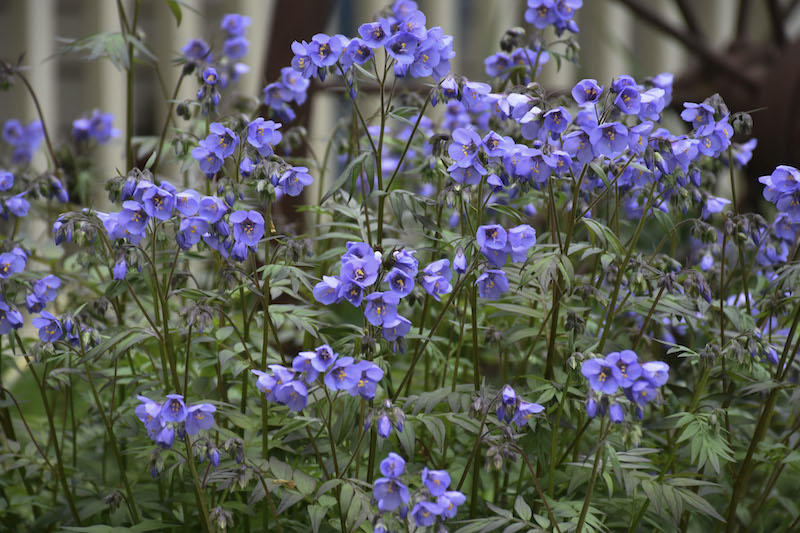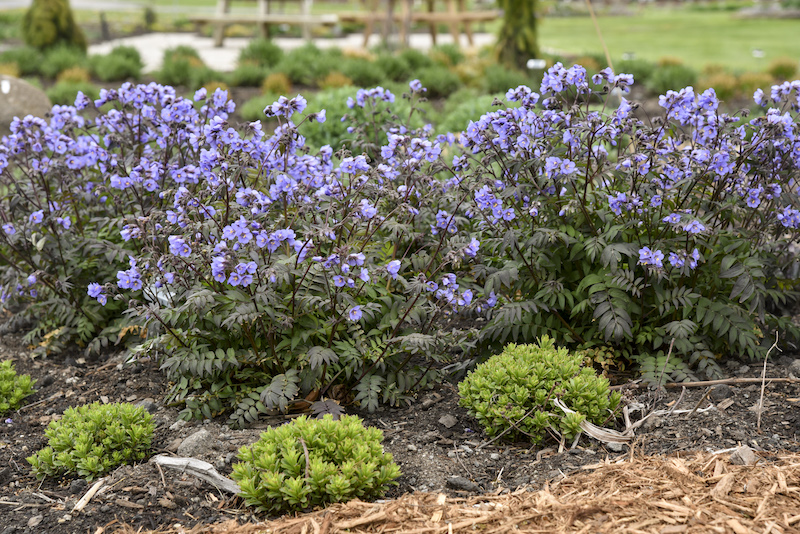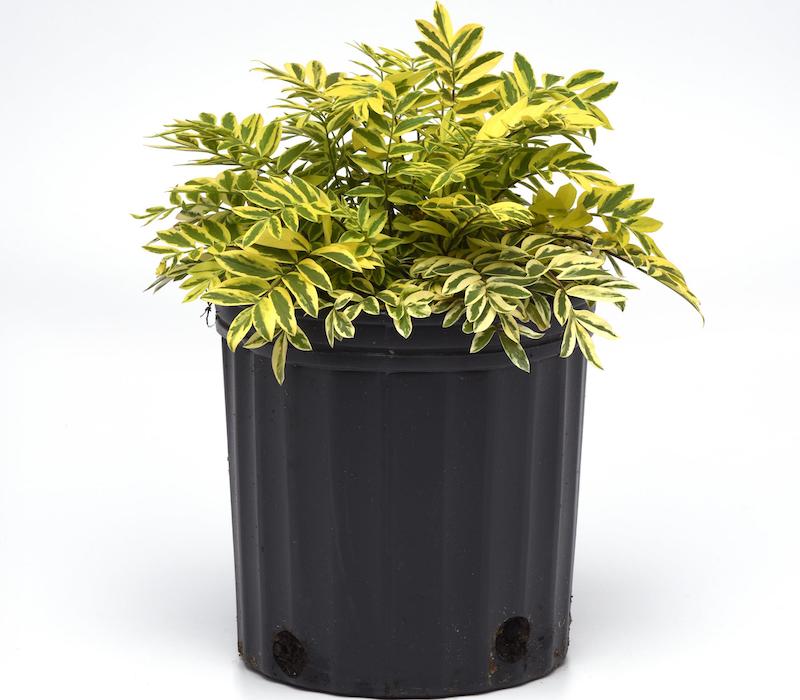Growing Jacob’s Ladder
With vibrant periwinkle blue, bell-shaped flowers perched atop a plume of fern-like leaves, Jacob’s Ladder is a beautiful blooming addition to a shade garden. Two main species of Jacob’s Ladder tend to be found in gardens: the wild and Northeastern United States native Polemonium reptans and the garden-bred Polemonium caeruleum. These semi-deer resistant spring bloomers keep their attractive foliage through the summer, earning the name Jacob’s Ladder from their stacked, ladder-like clumps of leaves.
Growing 1 to 3 feet tall, Jacob’s Ladder is most prized for its dainty flowers, which bloom from late spring to early summer and attract pollinators. In traditional medicine, Jacob’s Ladder leaves and flowers have been used to treat swelling and inflammation. Jacob’s Ladder is most successful in shade gardens as it prefers consistently moist soil and scorches easily in the heat and sun.

Planting Jacob’s Ladder
Choose a spot for Jacob’s Ladder than is protected from intense afternoon sun, especially in hotter and drier regions. Hardy in zones 3-8, Jacob’s Ladder is not recommended for southernmost states, as the leaves tend to burn in high heat. Plant Jacob’s Ladder in moist, rich, loamy, pH-neutral soil. Add a decent layer of organic mulch around the base of Jacob’s Ladder to both aid in moisture control and add nutrients as the mulch breaks down.
To plant, dig a hole that is twice the width and of equal depth as the root ball. It is important that the soil is well drained so that the roots do not sit in soggy soil; amend compact or clay soil with organic matter as needed.

Watering Jacob’s Ladder
Jacob’s Ladder is not tolerant of drying out. For this reason, water this perennial regularly, especially in its first year to help develop a deep root system. Keep the soil moist but not waterlogged, as soggy roots may lead to root rot. Jacob’s Ladder tends to go dormant in periods of drought, so stay on top of watering to keep the foliage happy and healthy through the summer. If placing Jacob’s Ladder in a container, you may need to water more regularly to keep the soil moist.
Fertilizing Jacob’s Ladder
Like other perennials, Jacob’s Ladder does well with a spring application of a balanced, slow-release fertilizer. This will aid in new growth and flower production without overfeeding. While fertilizer can be reapplied in the summer, a fall application is not necessary as the plant prepares for dormancy. When planting in a pot, fertilize Jacob’s Ladder with a balanced liquid fertilizer once a month until fall.
Pruning Jacob’s Ladder
Jacob’s Ladder is a low-maintenance plant. As its blooms start to fade, they can be pinched back and removed to keep the plant looking tidy. In the summer, withered and unsightly leaves and branches can be trimmed back, encouraging the plant to produce more foliage.
As an herbaceous perennial, it is normal for the leaves to die back in the winter as the plant goes dormant. Trim this dead foliage in the early spring before new growth arrives. Keeping the old foliage around though the winter will provide a bit of protection from extreme temperatures and frost.
Caring For Jacob’s Ladder in Pots
With beautiful spring blooms and attractive foliage through the summer and fall, Jacob’s Ladder is a perennial that can be used as a standalone plant or as a filler in planters. Choose a pot that is at least twice the width of the root ball to allow for room to grow. Make sure that your container or pot has drainage holes, as soggy soil can lead to root issues. Be sure to fill the pot with rich, well-draining soil. Pots tend to dry out faster than garden beds, so you may need to water Jacob’s Ladder more frequently in a pot.

Winter Care for Jacob’s Ladder
Jacob’s Ladder is quite cold tolerant, able to withstand temperatures in the negative 30s and 40s Fahrenheit when planted in the ground. To further protect the roots of a dormant Jacob’s Ladder, mulch can be added in the fall as long as care is taken not to completely cover the crown of the plant.
When keeping Jacob’s Ladder in pots, bring them into an unheated garage or basement in the winter to protect the plant’s roots from the cold. Jacob’s Ladder is an herbaceous plant and will therefore die back in the winter. Allow those dead leaves to stick around in your garden until the early spring to provide a bit of extra protection from the cold.
 |
Author Lynn Gusman - Published 3-20-2023 |
